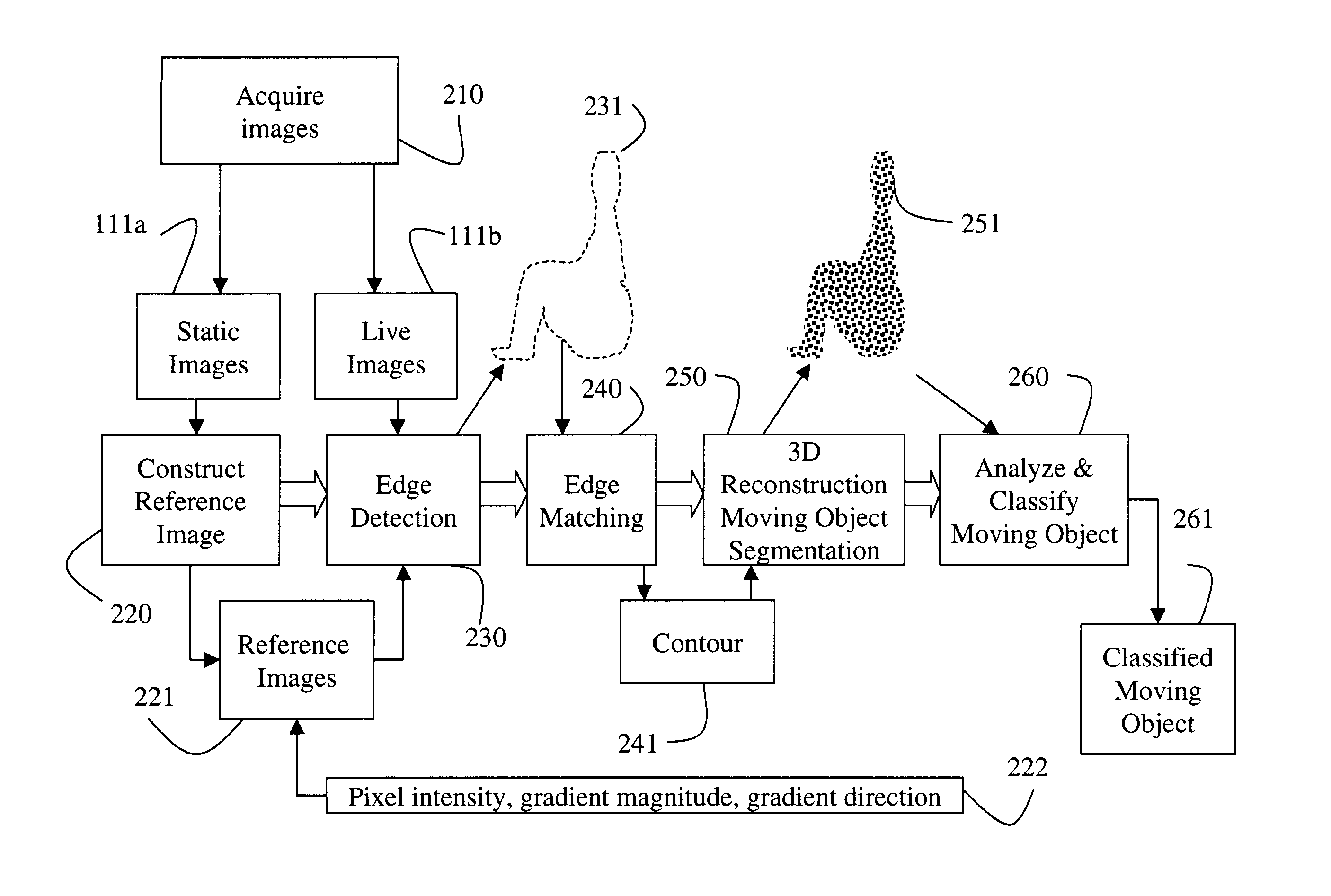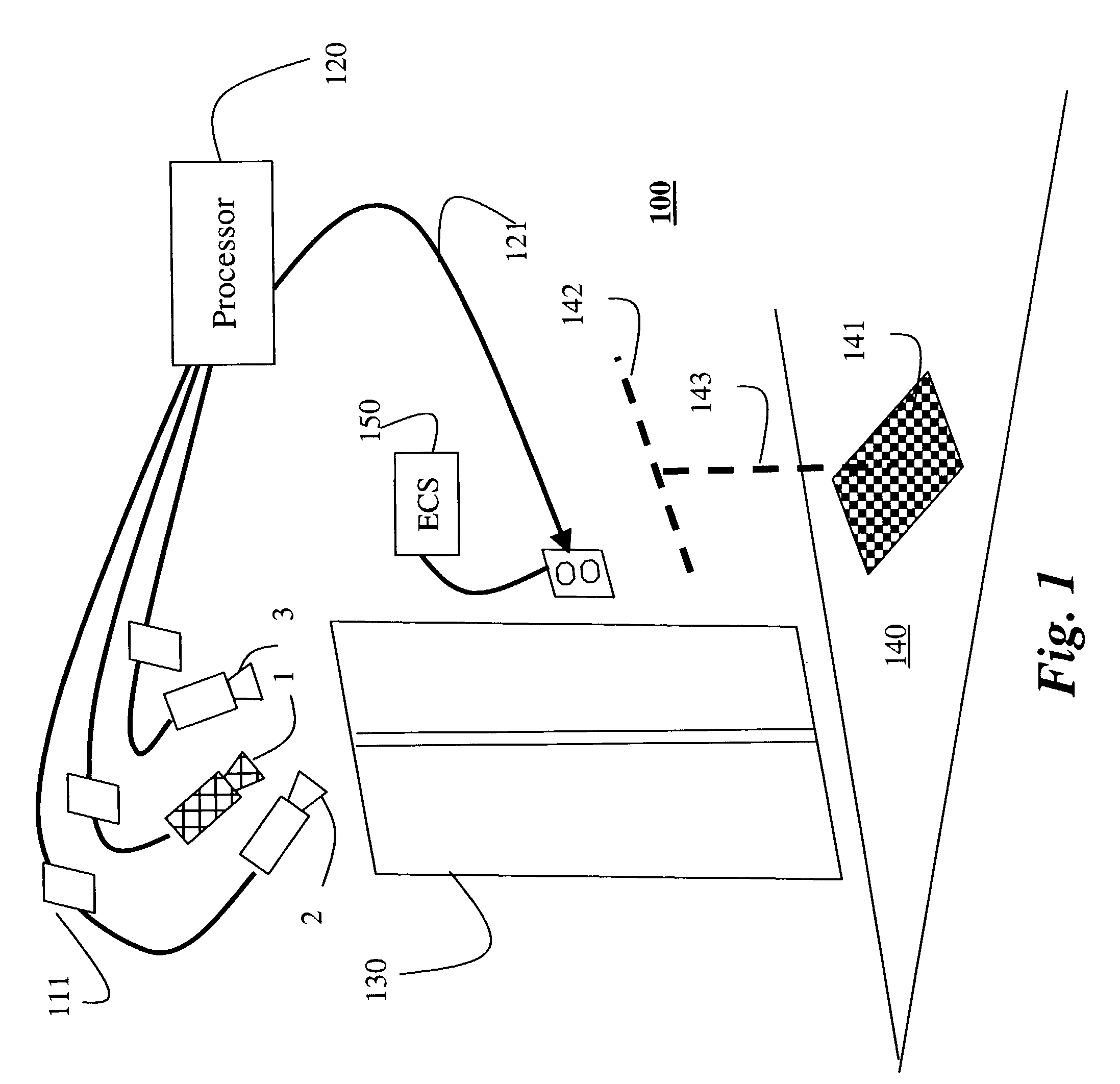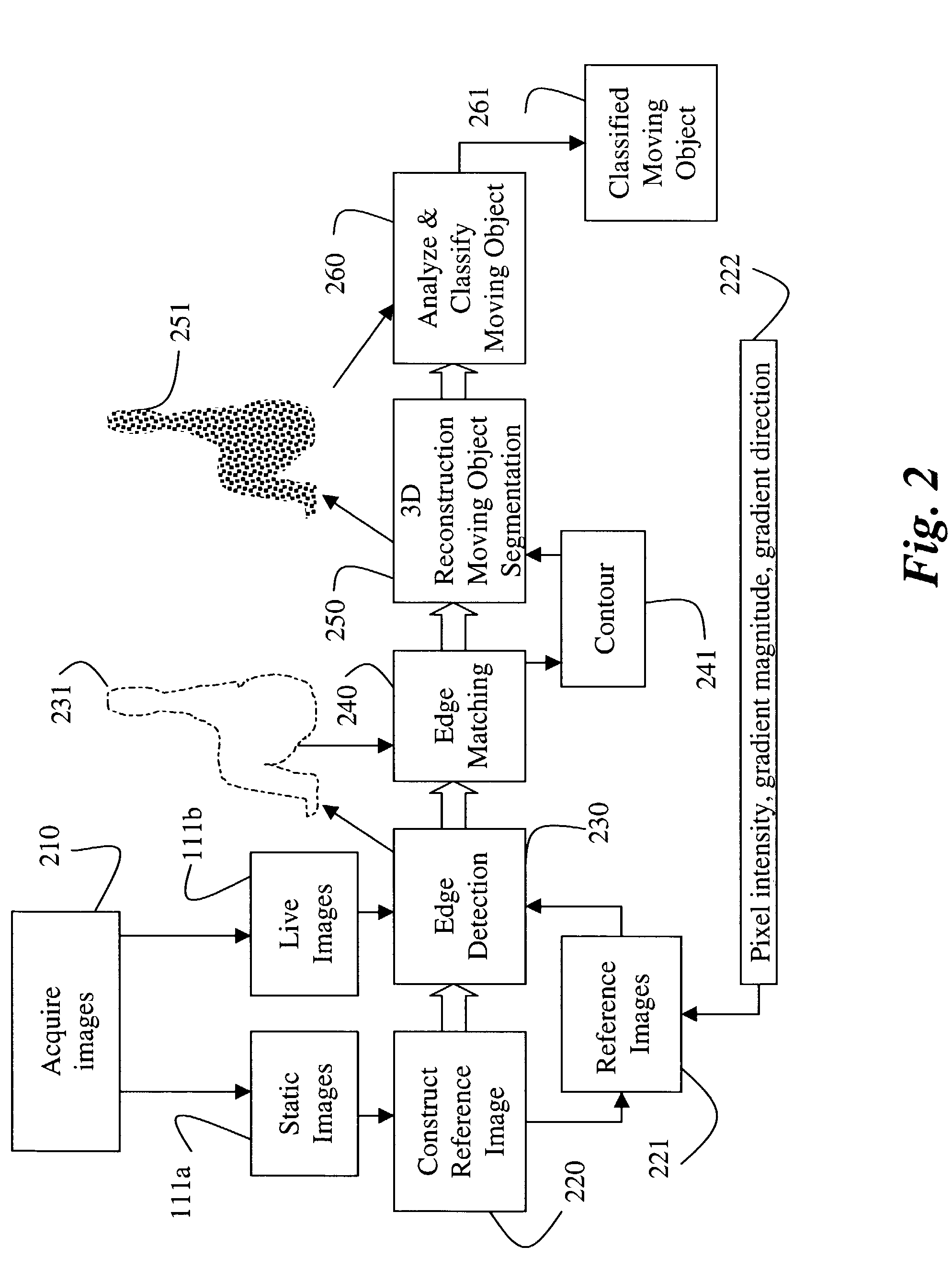Wheelchair detection using stereo vision
a stereo vision and wheelchair technology, applied in the field of computer vision, can solve the problems of manual system, inability to detect wheelchair users, inability to manually activate signals,
- Summary
- Abstract
- Description
- Claims
- Application Information
AI Technical Summary
Benefits of technology
Problems solved by technology
Method used
Image
Examples
Embodiment Construction
[0028]System Overview
[0029]FIG. 1 shows an object detection 100 according to the invention. The system 100 includes multiple cameras 1, 2 and 3, e.g., three, having their outputs connected to a processor 120 configured to perform computer vision processing, as described herein. An output signal 121 of the processor 120 is connected to an external system, for example, an elevator control system (ECS) 150. The external system 150 is controlled according to what is observed by the cameras.
[0030]The cameras 1–3 are mounted above elevator doors 130 so that images 111 acquired by the cameras are of a scene 140 in front of the elevator doors. It should be noted that the cameras can be mounted anywhere proximate to the scene. The cameras can use gray-scale or color sensors. The intrinsic and extrinsic parameters of the cameras 1–3 can be determined using any known calibration procedure. For purpose described below, the center (cross-hatched) camera 1 is the primary camera, and the two other...
PUM
 Login to View More
Login to View More Abstract
Description
Claims
Application Information
 Login to View More
Login to View More - R&D
- Intellectual Property
- Life Sciences
- Materials
- Tech Scout
- Unparalleled Data Quality
- Higher Quality Content
- 60% Fewer Hallucinations
Browse by: Latest US Patents, China's latest patents, Technical Efficacy Thesaurus, Application Domain, Technology Topic, Popular Technical Reports.
© 2025 PatSnap. All rights reserved.Legal|Privacy policy|Modern Slavery Act Transparency Statement|Sitemap|About US| Contact US: help@patsnap.com



